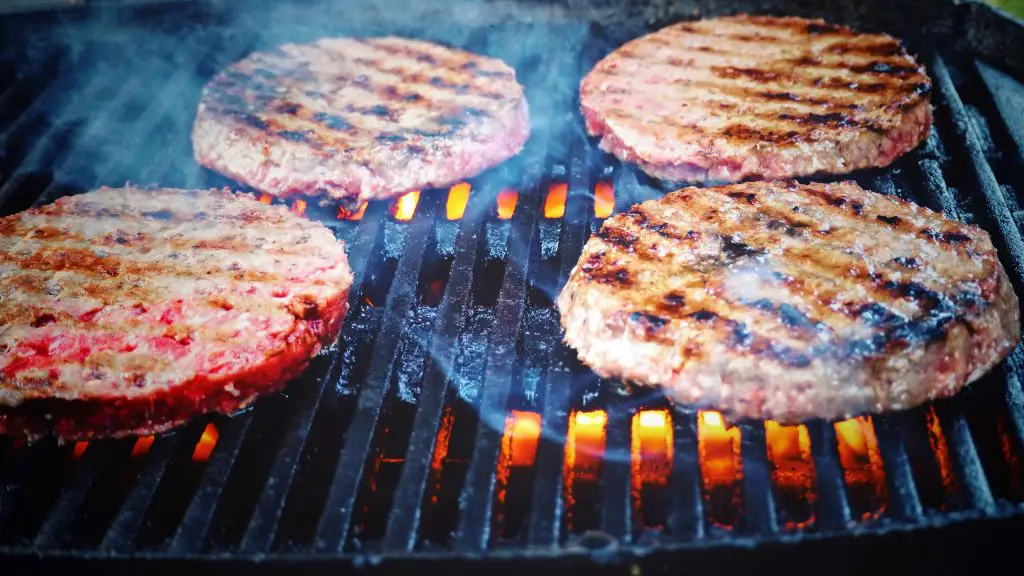One question we regularly get asked is what is the difference between steak and beef? In this post, we’re going to answer exactly that, and showcase the clear differences between these two types of meat.
Beef and steak are the two most widely cooked dishes in the United States. Many people still think both terms refer to the same thing, which is not true.
It’s like asking someone the difference between bacon and pork. If you know the distinction between these two, you can certainly tell the difference between beef and steak!
Just like pork is the real meat acquired from the pig and bacon is just a special form of cut coming out of pork, beef is the whole meat of the cow while there are only a few of the cuts taken from the meat which can be referred to as steaks.
Moreover, steak can also be made from chicken and other types of meat other than beef.
Although beef steak is more popular and well-liked, steaks made from other forms of meat are still called steak.
However, in this article, I will talk about some of the marked dissimilarities between beef and steak and also discuss different cuts of beef that are categorized as steaks.
So, let’s get started.
Contents
What Is Beef?
The meat that comes from large cattle, particularly cows, is known as beef worldwide.
Beef consists of three main parts; muscle, connective tissue, and fat. Since steak is just a specialized cut obtained from beef, it’s important to differentiate between tough and tender cuts to use them accordingly.
The tough cuts include chuck roast, brisket, short ribs, shoulder roast, and shank. Whereas, the tender cuts of beef include standing rib roast, strip steak, T-bone steak, sirloin steak, and rib-eye steam, among others.
There are also a few cuts that are neither tough nor tender. These include flank steak, chuck steak, top blade steak, and skirt steak.
As you can see, some cuts of beef are named as “steaks”, while others are not. So, the main difference between steak and beef is the level or degree of tenderness and also its texture.
Different parts of beef have different textures and to determine the texture, its main characteristics are considered.
These include the degree of tenderness, firmness, and juiciness. Moreover, the evaluators assess the collagen content and amount of dry matter to declare it suitable for a specific recipe.
Beef can also be used in ground form, which gives it that characteristic springy texture.
Beef can end up tougher or more tender depending on the part of the cow it was taken from and the temperature and ingredients used to cook it.
You may experience that the meat is falling apart when it is cooked for a long time on low heat but it will not be chewy because the collagen has dissolved and there are more juices in it.
What Is Steak?
The term steak refers to special cuts of meat obtained from several meat sources such as beef, chicken, tuna, salmon, pork, etc.
However, most commonly, steak comes from the meat of beef. It is good to understand that not all cuts of beef are referred to as steak, while on the other hand, all steaks coming from cows can be called beef.
To determine if a cut of beef is suitable to be cooked as a steak, you need to know how much connective tissue the part contains and how heavily the muscle was exercised.
If the connective tissue is more in amount, the muscle will become tougher making it unsuitable to be used as a steak.
Steak is mostly obtained from the muscles situated along the sides of the backbone. The large muscles that work a lot are not considered suitable to be cooked as steaks because they are tougher.
It is also important to match the cut to the cooking method to make sure you don’t end up overcooking some parts that already have more protein in them.
For example, if you cook the connective tissue for a long time, it will eventually soften up and become more edible. And that is why meat that contains more connective tissue is perfect to use as a steak.
However, there are some tender cuts that can be used as steaks but they don’t have a lot of connective tissue in them.
For these cuts, you will have to use high and dry heat to make them soft. Similarly, tougher cuts that come with a lot of connective tissue need gentler and moist heat as well as a long time to end up being softer and more delicious.
As a rule of thumb, remember to use low heat for connective tissue in order to make it break down into soft and silky gelatin.
Beef Cut Nutrition
Beef is one of the most nutrient-rich meats providing 10 essential vitamins and minerals including zinc, iron, and protein.
It is considered very nutritional for all age groups because it offers a good amount of these nutrients in fewer calories than other foods.
However, different cuts of beef may diff slightly in their nutritional content. And this is another difference between beef and steak that you must be aware of.
Let’s find out the nutritional content of different beef cuts.
Bottom Round Roast
This lean meat offers great nutritional value but it’s not meant to be used as a steak. This type of beef is usually roasted or baked.
It offers protein, niacin, vitamin B12, iron, phosphorus, and selenium. It has about 23g of total protein (based on a 2000-calorie diet).
Bottom Round Steak
This is known as everyday boneless cut, perfect for making skillets and tacos.
It offers a total of 29g of protein and 180 calories, out of which 60 calories come from the fat content.
Chuck Eye Roast
This cut is commonly known as America’s beef roast and it offers that typical beef flavor.
You can make a pot roast, smoked beef, and baked beef using this cut. It has 150 total calories and 22g of protein.
Chuck Eye Steak
If you are familiar with boneless chuck filet steak or Delmonico steak, this is where it comes from. It is used as an inexpensive alternative to rib-eye steak and is a tender cut.
Its composition includes 23g of protein and 180 total calories. This cut is rich in zinc and contains about 80% DV or 8.9 mg of zinc.
Denver Steak
Denver cut or chuck under blade center steak is very popular in the USA. These steaks are extremely tender and offer loads of typical beef flavor and marbling.
You can stir fry, broil, and grill this cut for preparing mouth-watering meals. It offers about 22g of protein and 8.4 mg of zinc.
Flank Steak
This is lean and boneless, which can be easily grilled and stir-fried. People use this type of cut to make steak wraps and beef fajitas.
It offers a total of 130 calories along with 23g of protein, 4.3 mg of zinc, and 2.6g of saturated fat.
Inside Skirt
With 25g of protein, 2.1 mg of iron, and 200 total calories, this beef cut probably offers the best nutritional value. It is also known as Fajita meat and skirt steak.
In addition to stir-frying and grilling, you can also broil it. People make grilled skirt steak and caesar beef steak using this cut.
Rib-eye Roast
This boneless rib roast is quite popular as it offers loads of marbling and good nutritional value. It has a total of 6 mg zinc and 24g protein along with 180 total calories.
The most popular recipe that uses this cut of beef is classic beef rib roast.
Rib-eye Steak
Unlike rib-eye roast, this cut is perfect for a steak as it’s juicy and full-flavored. It also comes with fairly good marbling all over.
Another difference is that it offers 190 calories instead of 180 and contains 5 mg of zinc as opposed to 6 mg.
T-Bone Steak
This cut comes ready for grilling and broiling owing to its level of tenderness and amazing flavor.
It offers 23g of protein and 3 mg of iron. People make all types of grilled T-bone steaks using this cut.
Why Is Steak More Expensive Than Beef?
Since steak is a specialized cut of beef and it involves the effort and expertise of the butcher to make that special cut, which is why it is expensive than ordinary beef.
The price of the steak is dependent on the area of beef from where it is taken. The areas that are most tender are the ones that are most expensively sold. While the areas that are tough are not that expensive.
On the other hand, making beef does not require that much effort as it does not come from any specialized area of the beef.
Some cuts of beef are more popular than others and are therefore more expensive too.
Steakhouses buy those cuts from farmers and the farmers charge those steakhouses a price according to the cost of rearing a whole cow in order to make a profit. That is why steak is much more expensive than beef of the same weight.
Final Thoughts
So what is the difference between steak and beef?
A lot of things, including the price, quality, and where the meat is taken from.
Often people get these two types of meat confused with one another but I hope this article has helped you understand the main differences between beef and steak.
I believe you are now in a better position to identify different types of steaks which would help in making buying decisions depending upon your budget and requirements.

